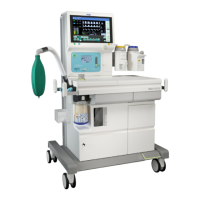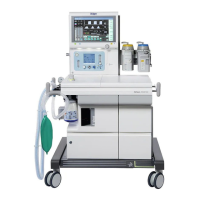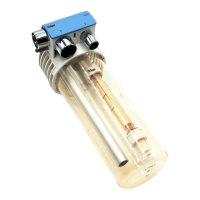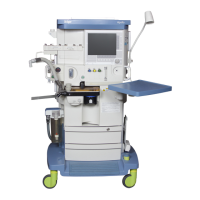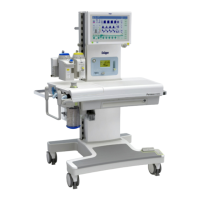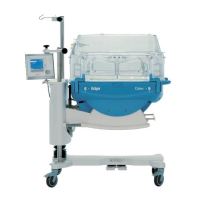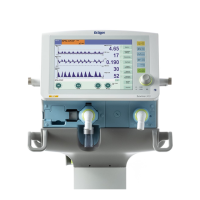Instructions for use | Atlan A100 (XL), A300 (XL), A350 (XL) SW 2.1n 119
Tests
Evaluation of the values determined for leakage:
7.4.3 Manual check for leakage
As an alternative to using the leakage assistant, vaporizers and coaxial breathing
circuits can also be checked for leaks by means of the following manual methods.
7.4.3.1 Manual check of a vaporizer for leaks
The leakage of a vaporizer can be determined with 2 tests:
– Quick tightness check: Checks whether there is leakage.
– Complete leakage test: Determines the leakage value.
Prerequisites:
– The leakage test of the device has been performed and passed.
– The vaporizer is mounted directly and securely on the plug-in adapter.
– The filling inlet is closed.
– The vaporizer is closed. The control dial is in the 0 position.
– The breathing circuit is correctly connected.
– The APL valve is set to 30.
– The Y-piece is sealed.
– All flow control valves of the gas mixer are closed.
Quick tightness check
1. Touch the Tests... button.
2. Touch the System test button.
The checklist opens and the breathing system pressure is displayed as a bar
graph in the lower left-hand corner.
3. Press the O
2+ key and keep it pressed until the displayed breathing system
pressure no longer rises.
4. Release the O
2+ key.
Test of the inspira-
tory hose
Test of the expira-
tory hose
Evaluation
≤150 mL ≤150 mL The breathing circuit is intact.
>150 to <500 mL ≤150 mL Low leakage. Check whether the
breathing circuit is suitable for the
particular patient category.
>500 mL ≤150 mL Do not use the breathing circuit.
There is a risk of rebreathing.
≤150 mL >150 to <500 mL Take account of the leakage when
setting the parameters for fresh gas
and ventilation.
≤150 mL >500 mL Do not use the breathing circuit.
>150 mL >150 mL The leakage is possibly caused by
other components and not by the
breathing circuit. Repeat the test with
a different coaxial breathing circuit.

